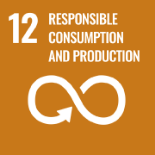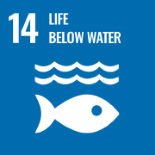CSR
In Pursuit of Product Design Friendly to Both People and the Earth
We, as a manufacturer and distributor of the air cleaners such as “j.air,”
commit ourselves to global SDGs (Sustainable Development Goals).

What are SDGs?
SDGs is an abbreviation of “Sustainable Development Goals,” which were designated as goals of the international community for the period of 2016-2030 in the “2030 Agenda for Sustainable Development” adopted at the UN Summit held in September 2015. The overall aim of SDGs is to unite people across the world to address and resolve global issues such as poverty, economic gaps, and climate change by 2030.
Our commitment to SDGs with j.air
From among 17 SDGs, we have started taking concrete actions toward three goals, as described below.
Good Health and Well-being
Various harmful substances are contained in the atmosphere. These substances include pollens, exhaust gas, PM2.5, and surprisingly microplastics (plastic waste is not only an issue concerning oceans). The air that we inhale contains harmful substances; we suck plastics into our body through respiration. Ozone and a large quantity of negative ions generated by j.air serve to remove such substances that adversely affect the human body, including dust particles, viruses, allergic substances and so on. Thus, j.air offers fresh air that contributes to human health. We will continuously contribute toward development of the environment for people’s active and energetic lives through designing products like the air cleaner “j.air.”
Responsible Consumption and Production
In designing products such as j.air, we have committed to give the product the warmth of trees and reduce the use of plastics as far as possible in order to reduce the burden on the natural environment and to increase recyclability, thus cutting waste and contributing to the establishment of a sustainable society.
We have long been strongly concerned about the major social issues of plastic waste and atmosphere pollution and strive to find ways that we can help reduce plastic consumption and hand down our rich natural environment of the earth to following generations. To this end, while many air purifiers use plastic exteriors, we choose to use wood as the exterior material of j.air in order to contribute toward resolving the stated issues while giving the product the warmth of wood to suit any room interior.
“The avoidance of waste” will ultimately prevent global warming, and using one product for a long time will also reduce waste. Mass-produced products generate a large volume of CO2 in their production processes and necessarily create some excess products that sit in warehouses forever without being sold to consumers for use. Eventually, dead inventories are disposed of as unwanted waste and the CO2 generated in the disposal process is discharged into the atmosphere, which then increases the global temperature. Based on our conviction to “eliminate waste,” we avoid excess production while having a product repair department that provides quick repairs services and directly reports to our headquarters.
In less than 200 years since the beginning of the Industrial Revolution, the global environment has largely changed. Although it may be virtually impossible to stop the change, the tide of pollution may get bigger and bigger and finally harm our daily lives unless we take action now. As such, our attitude toward product design is materialized into concrete steps that help to preserve the global environment and hand it down to next and future generations. We will continue adhering to this attitude in our product design.
Life below Water
Marine plastic waste is globally regarded as a major issue and contaminates the ocean adversely affecting creatures living there. In our products, the use of plastics is reduced to the minimum extent possible. This reduction helps preserve the richness of the oceans as well as preventing global warming. Raw plastic materials are prepared by refining crude oil into naphtha and then heating the naphtha. Moreover, further energy is needed to process the materials into desired shapes. Heat recovery from waste plastics also generates a large volume of CO2. In order to cut such waste and overcome the constant movement toward global warming, we stand firm in our goal to manufacture products with a minimum amount of plastics.




